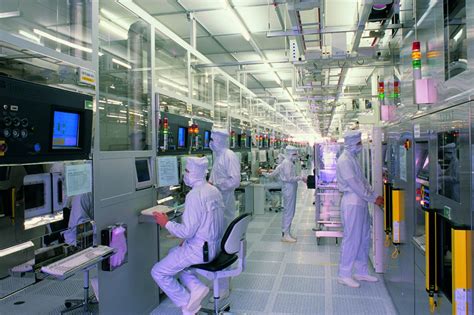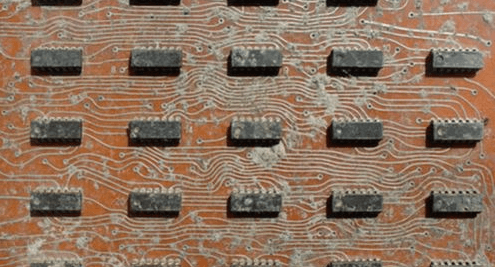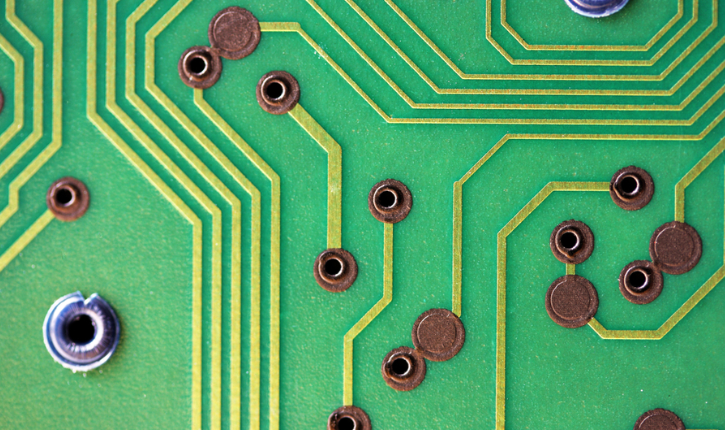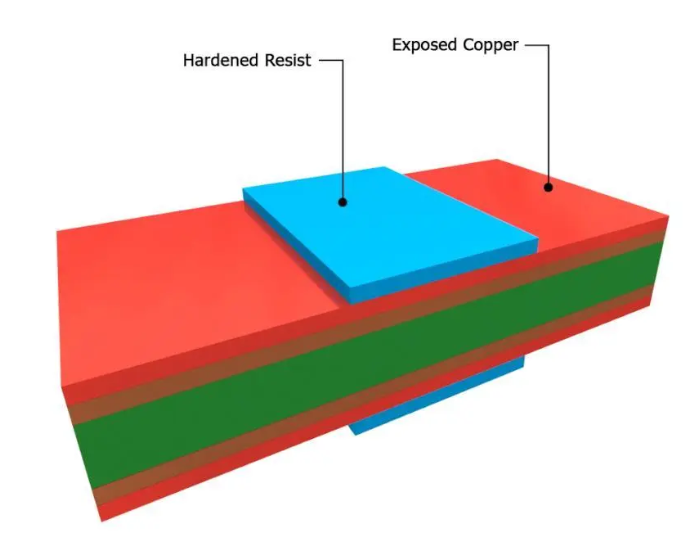Maximizing Efficiency with Custom Circuit Board Assembly Solutions
Key Takeaways
When delving into the realm of custom circuit board assembly (or PCBA), it’s essential to grasp the fundamental principles that drive efficiency in electronics manufacturing. One crucial aspect is the intricate relationship between tailored designs and their impact on overall performance. By employing custom circuit solutions, businesses can not only enhance the functionality of their products but also minimize costs associated with manufacturing processes. For instance, optimized PCB layouts can lead to better thermal management, reduced power consumption, and improved signal integrity—factors that are pivotal in ensuring a high-performing electronic device. Additionally, streamlining production processes is paramount; implementing innovative techniques in circuit board assembly can drastically reduce lead times and improve throughput. The meticulous planning involved in creating effective PCBA solutions acts as a catalyst for success, allowing businesses to meet market demands swiftly and efficiently. Furthermore, examining real-world case studies highlights the tangible benefits of customized approaches in assembly, inspiring other enterprises to embrace this strategy for sustainable growth and competitive advantage.
Understanding the Basics of Custom Circuit Board Assembly
Custom Circuit Board Assembly, commonly referred to as pcb assembly or pcba, is a pivotal aspect of electronics manufacturing. At its core, it encompasses the process of assembling electronic components onto a custom-designed printed circuit board (PCB). This assembly process allows for greater flexibility in design and functionality, tailoring each board to meet specific requirements for varying applications.
A fundamental understanding of pcba involves recognizing its role in enhancing the overall performance of electronic devices. By utilizing tailored designs, manufacturers can optimize circuitry layouts, minimize signal interference, and improve thermal management. This innovation ultimately leads to higher efficiency and reliability in electronic products.
One of the key advantages of custom circuit board assembly is the potential for significant cost reduction. By implementing efficient design methodologies and selecting appropriate materials, businesses can curtail production costs while maintaining high quality standards. Here’s a basic comparison table illustrating potential cost benefits through various design approaches:
| Design Approach | Potential Cost Savings | Quality Impact |
|---|---|---|
| Standard Assembly | Low | Medium |
| Tailored Custom Design | Medium | High |
| Advanced Layout Optimization | High | Very High |
“Investing in tailored designs may seem costly upfront but offers remarkable long-term savings and performance benefits.”
Additionally, understanding the basics of custom circuit board assembly allows companies to streamline their production processes. This not only accelerates time-to-market but also ensures that products meet rigorous industry standards consistently.
In conclusion, mastering the fundamentals of pcb assembly empowers businesses to innovate and thrive within the competitive landscape of electronics manufacturing. Embracing this knowledge is essential for those looking to enhance performance and drive cost efficiencies through intelligent design choices.
The Role of Tailored Designs in Enhancing Performance
In the rapidly evolving field of electronics, the significance of custom circuit board assembly (often referred to as pcb assembly or pcba) cannot be overstated. Tailored designs play a pivotal role in enhancing the performance of electronic devices. By employing customized layouts and components, manufacturers can optimize functionality for specific applications, reducing signal interference and improving overall reliability. This tailored approach not only addresses unique technical requirements but also allows for better thermal management and mechanical stability, which are critical for high-performance environments. Furthermore, customized pcba solutions can lead to smaller form factors by allowing for precise placements and reductions in component sizes, thus freeing up valuable space within devices. Ultimately, adopting advanced design strategies ensures that businesses can leverage custom circuit board assembly to achieve higher efficiency while meeting market demands for innovation and quality. Through these tailored designs, companies are equipped to enhance performance metrics significantly and remain competitive in today’s dynamic electronics landscape.
Cost Reduction Strategies through Custom Circuit Solutions
In today’s competitive electronics landscape, businesses are increasingly recognizing the value of custom circuit board assembly (PCB assembly) as a means to achieve significant cost reductions. By leveraging the flexibility of tailored designs in their pcba solutions, manufacturers can optimize the use of materials and minimize waste. One effective strategy involves meticulously analyzing each component’s role within the circuit, ensuring that only essential parts are included. This not only streamlines production processes but also reduces procurement costs associated with unnecessary components. Furthermore, innovative methods like automated assembly techniques can enhance efficiency—automating repetitive tasks while maintaining high quality standards in pcb assembly processes. Implementing lean manufacturing principles can also lead to a more efficient workflow, decreasing labor costs and shortening lead times. As a result, businesses adopting these strategies not only enhance their profit margins but also position themselves as leaders in a dynamic marketplace driven by efficiency and cost-effectiveness.
Streamlining Production Processes for Electronics Manufacturing
In the realm of electronics manufacturing, streamlining production processes is essential for achieving optimal efficiency and quality. One proven method to enhance production is through pcb assembly techniques that focus on customization. Tailoring these processes not only improves the integration of various electronic components but also ensures that the final product meets specific requirements, thereby increasing overall performance and reliability. The implementation of effective pcba strategies can significantly reduce lead times, as customized designs allow for quicker adjustments in manufacturing workflows. By minimizing waste and leveraging precise assembly techniques, businesses can also achieve substantial cost reduction, making it feasible to allocate resources more effectively. Embracing innovative tools and practices in circuit board assembly fosters a more adaptable production environment where varying demands can be met seamlessly, enhancing both productivity and customer satisfaction. Ultimately, prioritizing customized solutions in electronics manufacturing not only streamlines operations but also positions businesses for long-term success in a competitive market.
Innovative Techniques in Circuit Board Assembly
In the rapidly evolving field of electronics, pcb assembly has become a cornerstone of innovation and efficiency. One of the leading techniques reshaping the landscape is the integration of automated processes, which significantly enhances the precision and speed of pcba manufacturing. By utilizing advanced robotics and software-driven solutions, manufacturers can achieve a higher degree of accuracy in component placement, thereby reducing errors that typically lead to increased production costs. Furthermore, leveraging technologies such as surface mount technology (SMT) allows for a denser arrangement of components on custom circuit boards, thus optimizing space and boosting performance. Another emerging technique is the adoption of real-time monitoring systems during the assembly process, which provides immediate feedback and facilitates swift adjustments to maintain quality control. These innovative strategies not only streamline production processes but also result in superior end products that meet stringent industry standards. Embracing these cutting-edge approaches enables businesses to enhance their overall operational efficiency while staying competitive in a thriving electronics market.
Case Studies: Success Stories from Custom Assembly Solutions
In the realm of pcb assembly, numerous companies have successfully adopted tailored approaches to enhance their operational efficiency and product quality. For instance, a leading electronics manufacturer implemented custom circuit board assembly solutions to streamline their production line. By adopting specially designed pcba processes, they reduced their assembly time by an impressive 30%. This improvement not only accelerated their time-to-market but also allowed for a significant reduction in production costs, enabling them to allocate resources to research and development.
Another compelling case comes from a small startup that sought to infuse innovation in its product offerings through custom pcba techniques. By utilizing bespoke designs, they were able to optimize component placement on the circuit boards, which improved signal integrity and reduced electromagnetic interference. The result was a superior product that garnered praise from clients and led to an increase in sales by over 50% within the first year of implementation.
These success stories exemplify how adopting custom circuit board assembly solutions can lead to substantial advancements in manufacturing efficiency and overall performance. As companies navigate the complexities of electronics manufacturing, these cases highlight the transformative potential of pcba tailored strategies that effectively meet specific business needs while driving competitiveness in the market.
Future Trends in Custom Circuit Board Design and Assembly
As the electronics sector continues to evolve, the pcb assembly landscape is witnessing significant transformations that promise to enhance efficiency and adaptability. One of the key future trends is the integration of smart technologies within custom circuit board assembly processes. By utilizing advanced manufacturing techniques such as automation and robotics, businesses can streamline their pcba operations, resulting in faster turnaround times while maintaining high-quality standards. Furthermore, the advent of Internet of Things (IoT) devices is pushing for more interconnected circuit boards, where customized designs not only accommodate complex functionalities but also optimize the overall system performance.
In addition, sustainable manufacturing practices are being increasingly prioritized, with companies seeking eco-friendly materials and processes that minimize waste without compromising on quality. This shift towards sustainability in pcb assembly reflects a broader industry commitment toward responsible production. As customization becomes more accessible through advancements in design software and digital manufacturing techniques, we can expect a rise in smaller production runs tailored to specific consumer needs, which enhances responsiveness to market demands.
Ultimately, keeping an eye on these emerging trends will be crucial for businesses looking to leverage cutting-edge pcba solutions that not only meet but exceed performance expectations while enhancing operational efficiency.
Best Practices for Implementing Custom Circuit Solutions in Your Business
Implementing custom circuit board assembly solutions effectively requires a comprehensive approach that balances design, production, and quality assurance. First and foremost, it is essential to engage with experienced pcb assembly professionals who can provide insights into the technological advancements available. This collaboration enables businesses to develop PCBA processes that are not only tailored to meet specific requirements but also optimized for performance. Establishing clear communication between all stakeholders involved in the assembly process ensures that any potential issues can be identified and resolved quickly. Moreover, adopting robust project management practices can streamline workflows and enhance team coordination, leading to improved efficiency. Prioritizing regular training for employees on the latest trends in custom circuit board assembly practices also helps maintain high quality standards while fostering an innovative environment. Integrating advanced manufacturing technologies such as automation can further enhance productivity and reduce labor costs. By following these best practices, businesses can maximize the benefits of custom circuit solutions, paving the way for a more efficient manufacturing process while achieving greater overall satisfaction from their clients.
Conclusion
In the rapidly evolving world of electronics manufacturing, custom circuit board assembly (PCBA) has proven to be a cornerstone for businesses seeking to enhance their operational efficiency. By adopting tailored designs, companies are not only able to improve the overall performance of their products but also achieve significant cost reductions. Implementing innovative techniques in pcb assembly allows for a streamlined production process, aligning with modern manufacturing demands. Each tailored assembly results in optimized component placement and reduced wastage, ensuring that resources are utilized effectively. Moreover, as demonstrated in various case studies, successful implementation of custom solutions has effectively resolved unique challenges faced by different sectors within the industry. As businesses look towards future trends in custom circuit board design and assembly, it becomes evident that these solutions are essential for maintaining a competitive edge while adapting to a constantly shifting market landscape. In conclusion, prioritizing custom solutions in electronic components not only fosters innovation but also paves the way for enhanced productivity and profitability across the board.
FAQs
Q: What is pcb assembly?
A: PCB assembly refers to the process of soldering and assembling electronic components onto a printed circuit board (PCB) to create functional electronic products.
Q: How does pcba differ from regular PCB manufacturing?
A: PCBA, or printed circuit board assembly, encompasses not just the creation of the PCB, but also the entire assembly process that includes component placement, soldering, and testing.
Q: What are the benefits of using custom pcb assembly services?
A: Utilizing custom pcb assembly services allows businesses to achieve specific design requirements that can enhance performance, reduce production costs, and streamline manufacturing processes.
Q: Can custom designs really affect production efficiency?
A: Yes, tailored designs can significantly improve production efficiency by optimizing layout and component placement, which in turn minimizes manufacturing time and errors.
Q: What strategies can companies implement to reduce costs in PCBA?
A: Companies can explore bulk purchasing of components, optimizing material usage through design improvements, and investing in automation technologies to reduce labor costs in their PCBA processes.







